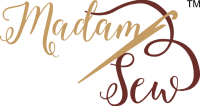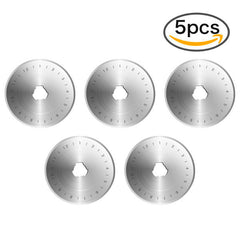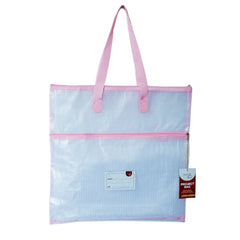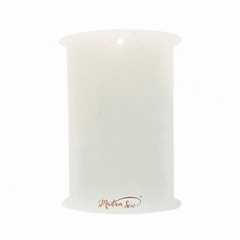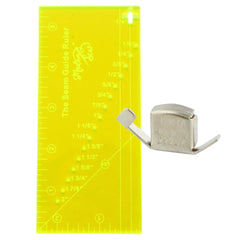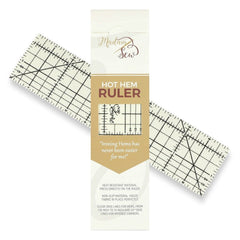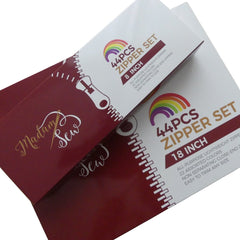How To Make A Thanksgiving Herringbone Quilt Block
Thanksgiving 10-inch Square Herringbone Quilt Block
A Simpler Way To Make A Complicated Block With A Funny Name
The Herringbone Quilt Block is complicated because of its V-Shape and all the multiple nested seams, which must align to create the pattern. And that funny name is because the pattern looks like the bones of a herring fish.
Its history includes the use of quilts to convey hidden messages used in the Underground Railroad. And its V-Shaped pattern has been around for centuries. You’ll see it in Roman roadways, modern floor patterns and in textile weaving.
In this blog, I’ll share with you a simple way to make a 10-inch square Herringbone Quilt Block.
My method for the Herringbone quilt block is simple to make. There are no fancy measurements, no half-square triangles, just straight line sewing, a bit of fussy cutting, careful assembly and trimming a block.
You’ll sew your fabric strips into two fabric panels. Cut each panel using the 45-degree angle line and then sew the panels together to form the V-Shape of the Herringbone quilt block. That’s it. The Herringbone quilt block is done.
In my method, you’ll need a 6-inch wide by 24-inches long quilting ruler with a 45-degree angle line. This is a standard angle found on most quilting rulers. This angle is commonly used in cutting half-square triangles and mitered corners.
6-inch Wide By 24-Inches Long Quilting Ruler With A 45-Degree Line
To complete this project, you’ll need the ability to do two things: Sew fabric strips together and fussy cut fabric using a 6-inch wide by 24-inches long quilting ruler with a 45-degree angle line.
📌Definition: Fussy Cut is cutting fabric with special attention to placement of the ruler to capture a particular part of the fabric’s design
A popular way to make the Herringbone quilt block is multiple half-square triangles flipped to make the familiar V-Shaped Herringbone quilt block pattern. Four 3.5-inch half-square triangles make one 6-inch square. That’s a lot of work to create a small block. And it really gets complicated when you want more than two fabric colors. My method is so much easier!
(Four) 3.6-inch Half Square Triangles Flipped To Make A 6-inch Sqaure Herringbone Quilt Block Pattern
Get Inspired By The Colors Of Thanksgiving
I never thought of it this way but if I had to name the one holiday with the biggest array of colors, then it would be Thanksgiving. It has all the beautiful Fall colors that you’d see during a stroll in the park among the changing tree leaves. And these colors evoke feelings of peace, hearth and home.
If you are like me, I bet you already have these colors in your fabric stash. But if you don’t, by all means, enjoy shopping for new additions to your fabric collections.
When we combine these colors with the Thanksgiving holiday itself, we’ll have a fantastic opportunity to convey a message of thankfulness for our friends and family. Use this Herringbone quilt block method to celebrate the holiday with placemats, pillows, wall hangings, banners, or combine several blocks to make a Thanksgiving Herringbone mini quilt.
Twenty Thanksgiving Colors
Checklist and Supplies Needed To Make The Herringbone Quilt Block
Supplies and Tools
These are the tools and supplies that I used to make the Thanksgiving Herringbone Quilt Block.
- Quarter Inch Presser Foot With Guide
- Coordinating Cotton Threads
- Thread Snips
- Rotary Cutter, 6 x 24 Inch Ruler, 6-inch Square Ruler and a Rotating Cutting Mat
- 10-inch Square Quilter’s Ruler (Optional)
- Black Fabric Marker (Optional)
- Sewing Stiletto and Long Flower Pins and Sewing Clips
- Madam Sew Heat Erasable Fabric Marking Pens
Supplies
Fabrics
You’ll select from your fabric stash thirty-two individual colors to make the Herringbone Quilt Block. If your fabric stash is like mine, the challenge will be limiting the colors to just thirty-two!
Fabrics
Cut ixteen 2.5-inch wide by 22-inches long strips of dark fabrics. Then cut sixteen 2.5-inch wide by 22-inches long strips of light fabrics. These fabrics will be used to create the V-shaped pattern of the Herringbone Quilt Block
Cut Fabrics
✂
Make The Herringbone Quilt Block In Four Easy Steps
Step One: Piece The Fabric Strips
Piece 16 fabric strips of Thanksgiving hued fabrics together to make two long panels which will form the V-shaped Herringbone quilt block pattern.
Thirty-two Fabric Strips Will Form The V-Shaped Herringbone Quilt Block
Panel A will be sixteen fabric strips comprised of eight dark and eight light fabrics that will make the right half of the V-shape of the Herringbone quilt block pattern.
Panel B will be sixteen fabric strips comprised of eight dark and eight light fabrics that will make the left half of the V-shape of the Herringbone quilt block pattern.
👉Make Panel A
Position the first pair of strips. Place the darker fabric on top of the lighter fabric. The darker fabric should be positioned 2.5-inches below the top of the lighter fabric underneath. Alternate the dark and light fabric strips as you sew the strips together.
Closeup Of Positioning The Strips For Sewing Panel A
Continue to add the remaining fourteen fabrics with each strip positioned 2.5-inches from the top.
Closeup Of Sewing First Panel A
When finished, you’ll have a long panel made of sixteen diagonal fabric strips. The diagonal fabric strips of this panel will form the right half of the V-shaped Herringbone quilt block pattern. Label this panel A and place it to the side of your workspace.
Panel A Makes The Right Half Of The V-Shaped Herringbone Quilt Block
👉Make Panel B
Position the first pair of strips. Place the lighter fabric on top of the darker fabric. The lighter fabric should be positioned 2.5-inches above the top of the darker fabric underneath. Alternate the light and dark fabric strips. Remember, the fabric strips must be sewn with right sides together.
Closeup Of Positioning The Strips For Sewing Panel B
Continue to add the remaining fourteen fabrics with each strip positioned appropriately.
Closeup Of Sewing The Second Panel
When you’re finished you will have a long panel made of sixteen diagonal fabric strips. The diagonal fabric strips of this panel will form the left half of the V-shaped Herringbone quilt block pattern. Label this panel B and place it near your workspace.
Panel B Makes The Left Half Of the V-Shaped Herringbone Quilt Block
Use an iron to press the seams of each panel in the opposite direction of panel A. This will make nesting the seams easy.
Next, you will fussy cut each panel separately.
✂
Step Two: Fussy Cut Each Fabric Panel
👉Fussy Cut Panel A
Place panel A in your workspace. Then position the 6-inch wide by 24-inch quilter’s ruler so that the line for the 45-degree angle aligns with one of the seams of panel A. This will ensure that the fabric is cut diagonally and will point to the right.
6-inch Wide By 24-inches Long Ruler Positioned On Panel A
Use the perimeter of the 6-inch wide by 24-inch long ruler to fussy cut panel A. Therefore, the fussy cut panel A will be 6-inches wide by 24-inches long.
💡Tip: Make sure that the fabric extends at least an inch beyond the perimeter of the ruler. This will avoid missing segments of fabric when fussy cutting.
Fussy Cut Panel A
Use an iron to press the seams in one direction. This will make nesting the seams easy. Place the fussy cut panel A to the side of your workspace.
👉Fussy Cut Panel B
Fussy cut panel B using the 6-inch width of the ruler as your guide. Position the 6-inch wide by 24-inch quilter’s ruler so that the line for the 45-degree angle aligns with one of the seams of panel B. This will ensure that the fabric is cut diagonally and will point to the left.
6-inch Wide By 24-inches Long Ruler Positioned On Panel B
The fussy cut panel B will be 6-inches wide by 24-inches long.
Fussy Cut Panel B
This is a good time to check that the seams for each panel are pressed in opposite directions. This will make nesting the seams easy. Place the fussy cut panel B to the side of your workspace.
✂
Step Three: Sew Panel A to Panel B
Place panel A and panel B side-by-side to make the V-Shaped Herringbone pattern.
Pay careful attention to the seam alignment. The diagonal fabrics should meet at a point in the center. Take full advantage of the length of the two panels to get the colors and alignment that you like the best. Remember, all you will need to align is 10-inches square.
💡Tip: Tip: This would be a great time to use a ten-inch square ruler to audition the alignment of the panels.
Panels Positioned Side-By-Side To Form The Herringbone V-Shaped Pattern
Then, with right sides together, sew the panels together with a quarter-inch seam allowance.
The sewn panels should measure 11.5-inches wide by 24-inches long.
✂
Step Four: Trim The 10-inch Square
Use a 10-inch square ruler or the 6-inch wide by 24-inch ruler to trim the sewn panels to 10-inches Square.
Trimming The Sewn Panels To 10-inches Square
💡Tip: Tip: The aligned points in the center of the V-Shaped Herringbone pattern is the vertical center of your 10-inch square block. You should see 5-inches on the right and 5-inches on the left of the vertical center. A fabric marker or heat-erasable pen can be used to trace the 10-inch square shape on the fabric.
This four-step method can be altered to enable you to make multiple 10-inch square blocks. Simply make more pairs of panels A and B.
Finished Thanksgiving 10-inch Square Herringbone Quilt Block
Your Thanksgiving Herringbone Quilt Block is complete. This simpler method opens up endless creative possibilities for your next quilt project.
✂
More Ways to Use Your Herringbone Blocks:
- Create a stunning table runner by arranging 3-4 blocks in a row
- Make matching placemats for your Thanksgiving dinner table
- Design a festive wall hanging to celebrate the season
- Combine multiple blocks with sashing to create a full-size quilt
- Experiment with different color schemes for other holidays or seasons
Take Your Skills Further: Now that you've mastered this technique, try these other fun and easy quilt blocks:
I'd love to see your finished Herringbone blocks! Share your creations with the quilting community and inspire others to try this accessible method.
May your quilting always bring you joy!
Ernie Grant
Guest Blogger For Madam Sew
Ernestine “Ernie” Grant is an avid quilter with over 18 years of experience and is the owner of the custom baby quilt business kalibabyquilts.com
